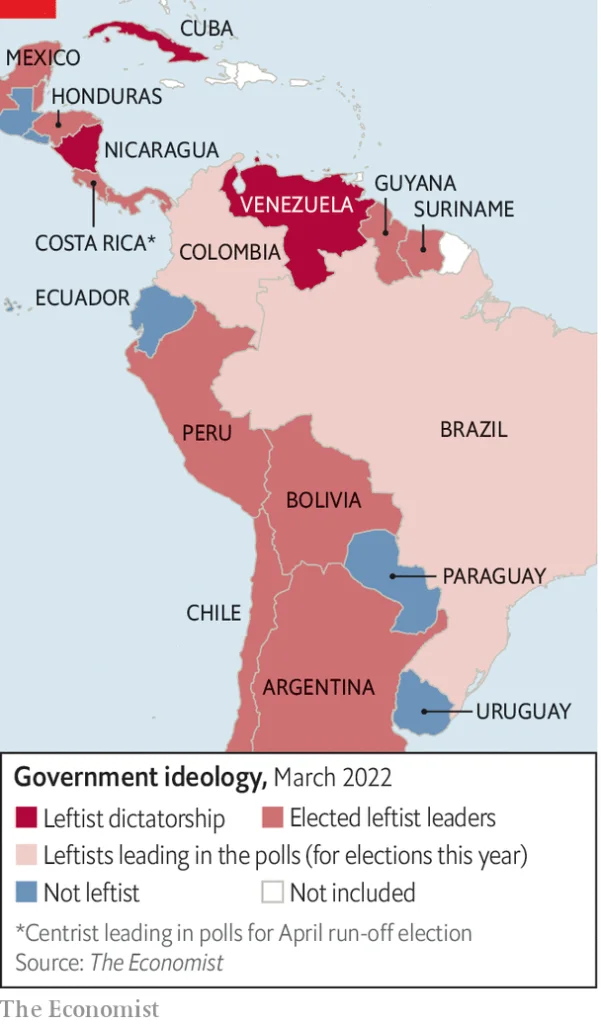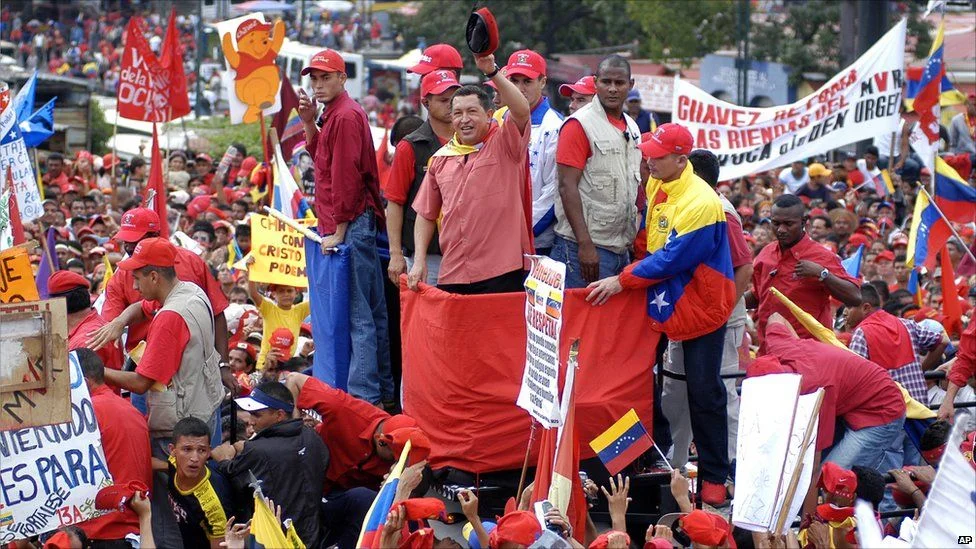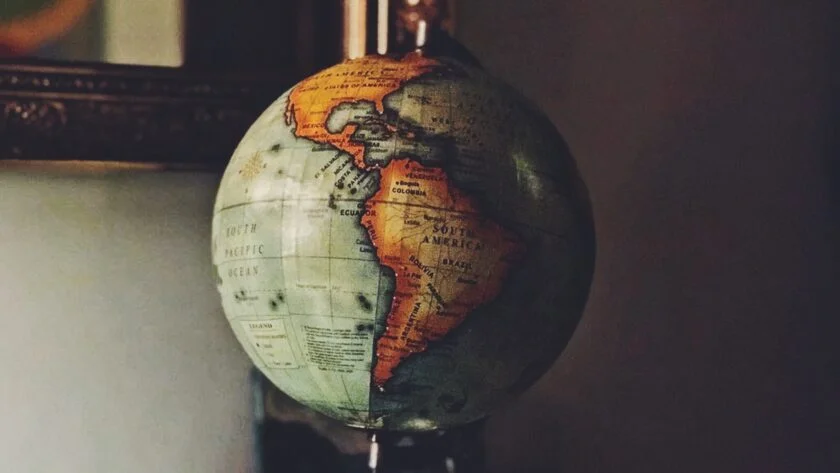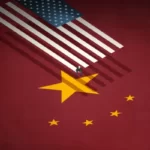Latin America is undergoing a profound political shift when the entire world is focused on China, Russia and the US. The political order of Latin America started to have a crucial transition in 2021, and it is not over yet. After the presidential elections in Chile, Peru, Honduras, and recently Colombia, we can see the “pink tide” resurgence that swept the region in the late 1990s.
In the April 2021 general election, Peru elected the socialist union leader Pedro Castillo. Later in November 2021 election, Chile elected the left-winger Gabriel Boric, and Honduras elected leftist President Xiomara Castro. With the latest election results from Colombia, the ex-guerrilla member Gustavo Petro was elected president. Thus, we can see a remarkable comeback of the left-wing trend after two decades.

Image courtesy-The Economist
Most analysts are predicting that in the upcoming presidential election, Brazil will revert to the left after the four years of rule under Jair Bolsonaro. The new left-wing governments are putting forward different political, social, and economic approaches to development which will bring constant changes that will refurbish nations’ social and economic progress. This will certainly influence the Brazilian voters.
What Is Pink Tide?
The pink tide is a term used to refer to the trend of electing left-wing, non-communist, and progressive governments to power in Latin American countries. This term originated from a New York Times article written by journalist Larry Rohter in 2005. The term became popular after the victory of Hugo Chavez in the Venezuelan 1998 presidential elections. The Latin American nations that have undergone these ideological trends are known as pink tide nations.
It is termed ‘pink’ because that will be easy to distinguish it from the ‘red tide’ of communists and other left-wing revolutionaries. At its core, it was a reaction to unpopular neoliberal policies implemented by most governments in Latin America during the 1990s.
History of Pink Tide in Latin America
The Emergence of the Pink Tide
The advent of the pink tide started with the failures of neoliberalism and democratic illusion toward the political system which promoted it.

Image courtesy-BBC
At the end of the 1990s, the region underwent several unsuccessful efforts like privatisation, cuts in social spending, and foreign direct investment that left the countries with high unemployment, inflation, and rising social inequality causing various social and political upheavals in Latin America. This led to the rise of new left-wing governments that tended to break all neoliberal policies by deregulating the financial and labour markets and reducing the state’s role. It started picking up momentum after the electoral victory of Hugo Chavez. Later Brazil, Ecuador, Argentina, Bolivia, Uruguay, and other countries in Latin America also elected left-wing leaders.
The left-wing governments in this region do not have a uniform agenda. The governments of Venezuela, Bolivia, and Ecuador were more radical than other countries like Brazil, Argentina, and Uruguay.
The Crash of the Pink Wave
The pink tide started receding around 2012, after the death of Hugo Chavez. His demise accorded with the crash of the commodity boom that paved the way for many left-wing governments to finance their social programs. However, the end of the boom adversely affected nations like Venezuela, Ecuador, and even Brazil.

Image courtesy-BBC
In 2012, the left-wing President of Paraguay, Fernando Lugo, was impeached, and Partido Colorado, a right-winger, came into power. Later in 2015, businessman Mauricio Macri became the first elected right-wing president in Argentina. In 2016, Brazil’s Senate impeached President Dilma Rouseff, and Michel Temer of the centre-right Brazilian Democratic Movement became the president. Later the right-wing ideas conquered the arena and tried to impose their agenda in the region.
Re-Emergence of the New Pink Tide
Latin America is going through a period of leftist revival. The main reason for the collapse of conservative ideology is the poor handling of COVID-19. After decades in December 2018, Mexico elected its first leftist president Andres Manuel Lopez Obrador. This shows the apparent shift of power from right to left ideology.

In 2019, Peronist Alberto Fernandez became the president of Argentina. Thus, Argentina, Latin America’s third-largest economy, which faced inflation, credit default fears, and intensifying poverty, shifted to the left. The tide is still continuing with the election victories of Luis Arce in Bolivia, Pedro Castillo in Peru, Gabriel Boric in Chile, and Gustavo Petro in Colombia. If Lula wins the Brazil presidential election in October, it will be a cakewalk for the left-wing governments in the region.
Disposition of New Pink Tide and Its Leaders
Most of the new pink tide leaders are left-of-center or progressive and have much in common. However, some, like Mexico’s Lopez Obrador, have an authoritarian tendency, enabling them to stand out from the rest. Some leaders have a clear inclination toward democratic principles, which the President of Chile, Gabriel Boric, called the ‘new Chilean Way’.

Image courtesy-CNBC
Some of the newly elected are sharply critical of dictatorships in Venezuela, Cuba, and Nicaragua. Also, we can see an anti-American stand among the newly elected leaders and their followers. It was visible during the time of the Summit of the Americas. Mexico worked hard to boycott the summit because the Biden administration declined to extend invitations to the autocratic leaders of Cuba, Venezuela, and Nicaragua. Latin America, except for Cuba and Venezuela, will not be a fertile ground for growing China and Russia. They all have strong social sentiments towards the world. They also have a policy of putting poor people first and adopting several anti-extractive strategies on natural resources and the environment.
Future Brazil: Bolsonaro V/S Lula
Brazil is going to face unrest with the upcoming presidential election. In the current state, Brazilian leftist Luiz Inacio Lula da Silva maintains a lead against right-wing President Jair Bolsonaro. According to poll predictions, Lula will win with a narrower 14 percentage point gap against Bolsonaro.

The new pink wave is different from the original version of Hugo Chavez. For instance, Castillo came into power in Peru by creating tensions within his own socialist party. Also, in Chile, President Boric tried to criticise the leftist authoritarians in the region. Anyway, all these political developments in Latin America will definitely make a shift in Brazil in the October election. Thus we can undoubtedly witness a paradigm shift in Brazil where the conservative nation will elect the left-wing progressive government led by Lula over the conservative party.
Conclusion
The newly elected leaders have promised to transform the countries’ economic models by raising taxes on rich people to fund social programs for the welfare of poor people and by also supporting sustainable energy resources.
Latin America’s shift towards the left seems inevitable. Poverty, inequality, and the failure of neoliberal policies have worsened the situation in Latin America to a greater extent. This made the people question the populist right-wing governments.
Suppose these new governments can learn from the earlier mistakes made by their political ancestors and by investing in a sustainable future. In that case, there might be hope for continuing the ruling in their respective regions. Indeed, this will be a reclamation rather than a repetition.
You may also be interested in:
An Overview of the Rising Right-Wing Extremism in Europe
About the Author

Born and raised in a highly conservative family, Rekha always wanted to shatter all chains surrounding her from achieving her dreams. She is pursuing her Masters in International Relations and Politics from Mahatma Gandhi University, Kottayam. Her fundamental research interest is in feminism. She also volunteers for the Sex Education Kerala (SEK) foundation.






